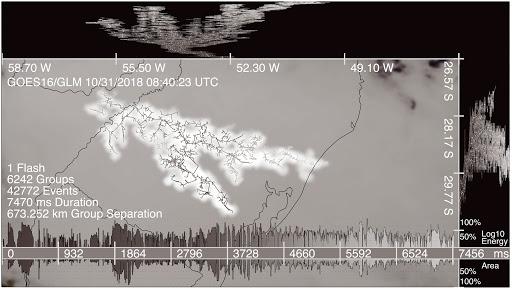
The World Meteorological Organization, or WMO, investigates and certifies meteorological records. On Friday, a WMO committee of experts confirmed a new world record for the longest single lightning flash. The single flash occurred on Oct. 31, 2018 and covered a horizontal distance of 440.6 miles, plus or minus 5 miles, across parts of southern Brazil.
This new record for the longest detected distance for a single lightning flash smashes the previous record of 199.5 miles, which occurred on June 20, 2007 across Oklahoma.
The WMO committee also certified a new record for the greatest duration for a single lightning flash: 16.73 seconds over northern Argentina on March 4, 2019. The new record for duration of a single lightning flash is more than double the previous record of 7.74 seconds on Aug. 30, 2012 over France.
These long flashes have come to be known as “megaflashes” and are lightning discharges that reach more than 50 miles in length. They originate in massive convective storm complexes known as mesoscale convective systems.
New satellite observations to study lightning were used to help validate the new record. It is these new satellite technologies that enable the observation and study of these long-lived lightning events, which previously could not be measured. The space-based instruments also provide near-global coverage of lightning flashes. These measurement capabilities are relatively new, and thus it is likely that these new records will fall as lightning detection technology continues to improve.
Lightning is very dangerous. While your chances of getting hit by lightning are only about 1 in a million in a given year, it is good to keep some safety tips in mind. The National Weather Service advocates the simple rule: “When thunder roars, go indoors!”

